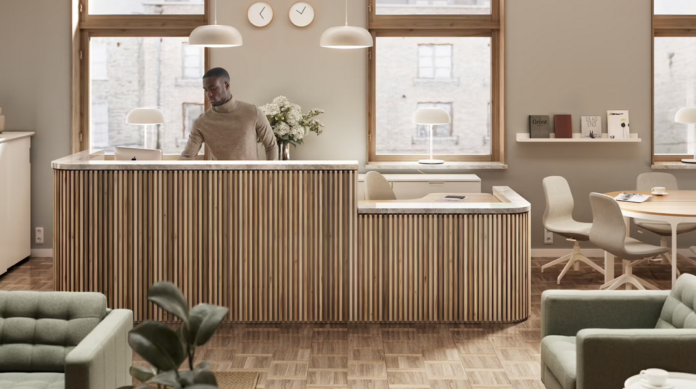In the world of retail, first impressions matter. As customers enter your store, their initial encounter with your products, services, and overall ambience can significantly influence their purchasing decisions. As such, the shop counter is one key element that can make or break this impression. It is more than just a transactional surface; it’s a focal point that reflects your brand identity, showcases your merchandise, and offers a space for customer interaction. So, this article delves into the art of choosing the perfect one to revamp your retail space and create an unforgettable customer experience.
The Significance of the Shop Counter
Imagine walking into a store that is cluttered, outdated, and doesn’t align with the rest of the store’s aesthetic. This kind of experience can be off-putting and might discourage potential customers from exploring further. On the other hand, a well-designed store counter can:
- Reflect Your Brand Identity: It is often one of the first things customers notice when they enter your store. Its design, materials, and overall look can communicate your brand’s values and personality. Whether you’re aiming for a modern and minimalist vibe or a rustic and cozy feel, It can influence how the overall shopping experience is perceived.
- Showcase Your Products: It allows you to display your most enticing products or limited-edition items. Strategically placed merchandise near the counter can encourage impulse buying and spark conversations between your staff and customers.
- Facilitate Customer Interaction: It isn’t just for transactions; it’s a space for customer engagement. It’s where customers can ask questions, seek recommendations, and interact with your knowledgeable staff. A well-designed counter can encourage these interactions, leading to better customer satisfaction and potential upselling opportunities.
Factors to Consider When Choosing a Store Counter
- Store Layout and Space: The dimensions and layout of your store will play a significant role in determining the size and style of your it. Ensure that the counter doesn’t obstruct foot traffic and fits seamlessly within the available space.
- Material and Design: The materials used for it can greatly impact its visual appeal and durability. And depending on your brand’s image, you can choose from various options, including wood, glass, metal, or a combination of materials. The design should complement the overall aesthetic of your store.
- Functionality: Consider the functions you need it to serve. Do you require ample storage space? Will it house a cash register, card reader, or other technological equipment? Consider these practical aspects to ensure the counter meets your operational needs.
Exploring Different Types of Store Counters
- Traditional Checkout Counter: This classic option features a flat surface for transactions and a lower space for customers to place their items. It’s practical and functional, ideal for businesses with a steady stream of customers.
- Reception-Style Counter: If you want to create a welcoming atmosphere, a reception-style counter with a curved or elevated design can be a great choice. It encourages face-to-face interactions and adds a touch of sophistication to your store.
- Display-Centric Counter: Businesses that thrive on visual merchandising can benefit from a display-centric counter. These counters come with built-in shelves or racks to showcase products, making it easier for customers to browse and make impulse purchases.
Conclusion
In the competitive world of retail, crafting a memorable and captivating shopping experience is paramount. As a focal point of customer interaction, the shop counter holds the power to enhance your brand’s image and boost sales. As such, by carefully considering factors like store layout, materials, and design, you can choose the perfect retail counter that aligns with your business goals and resonates with your target audience.
